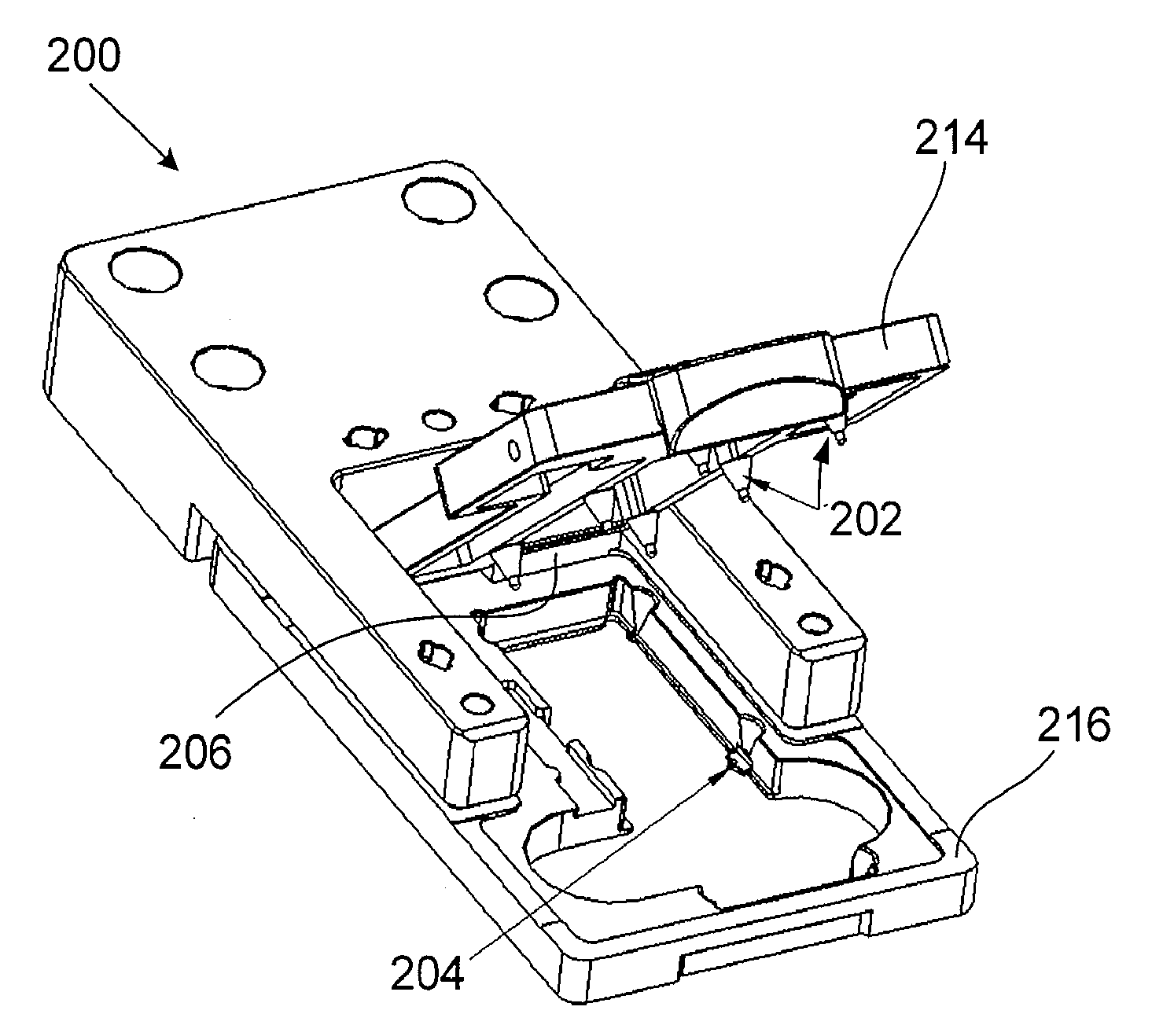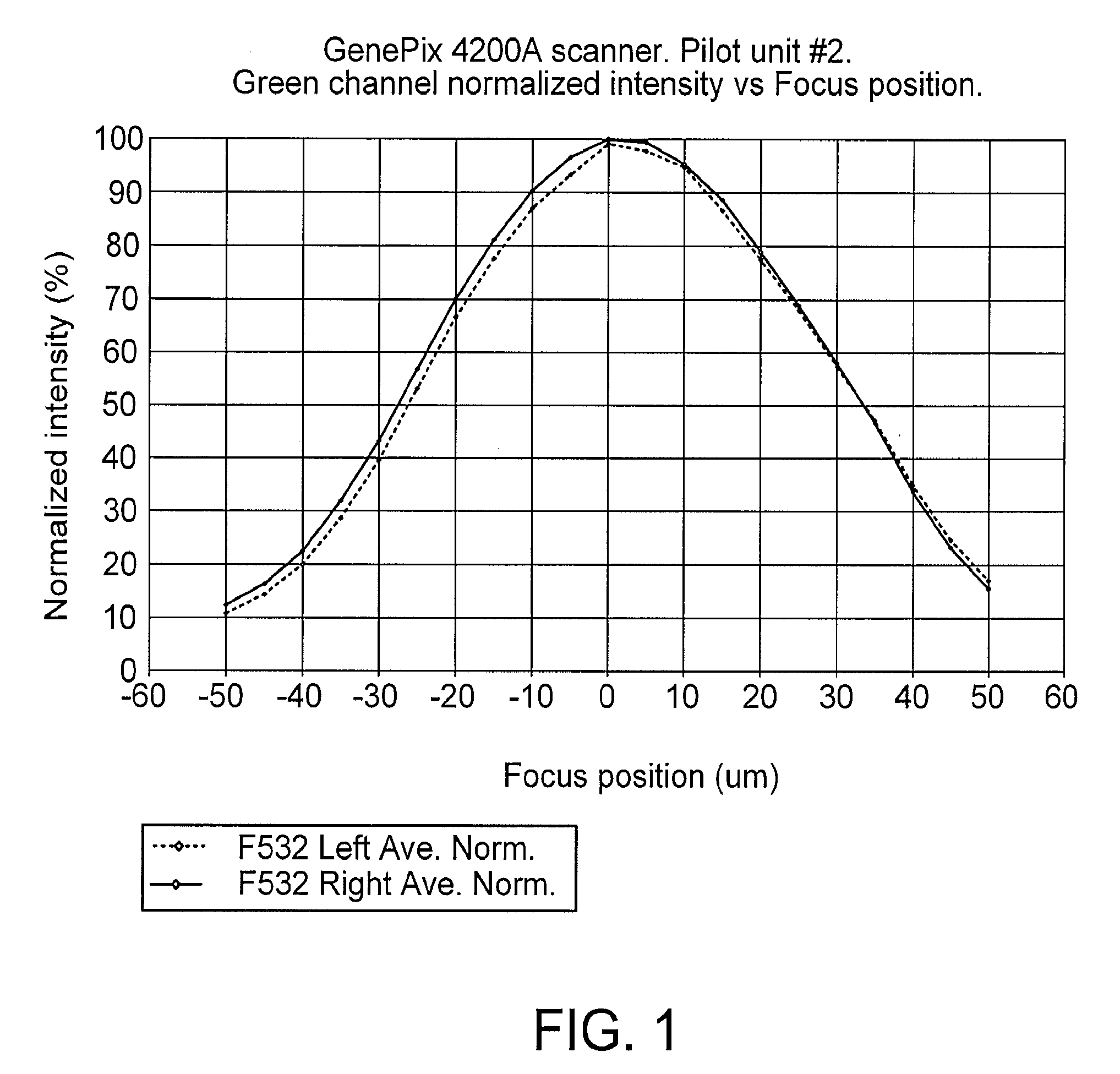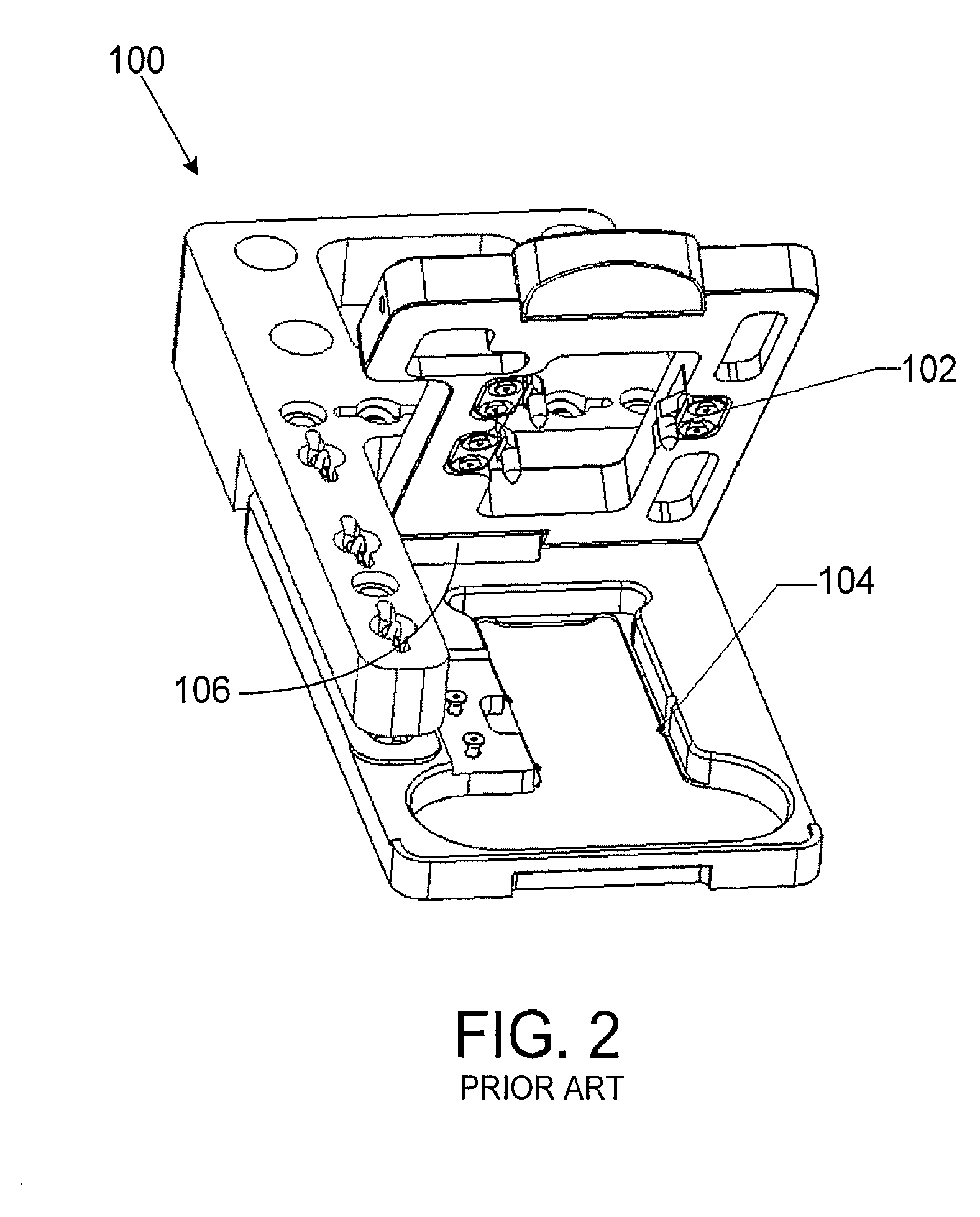Uniformity in slide scanning
a scanning and slide technology, applied in the field of scanning slides, can solve the problems of non-uniform image intensity, large defocusing, and deviation from flatness, and achieve the effect of improving the uniformity of slide scanning, effective and economical manner
- Summary
- Abstract
- Description
- Claims
- Application Information
AI Technical Summary
Benefits of technology
Problems solved by technology
Method used
Image
Examples
example 1
FIG. 7A shows the deviation from planarity of an unrestrained / uncompressed non-planar slide as measured by interferometry. Resulting peak-to-valley (PV) non-planarity was measured at 3.65 micrometers.
FIG. 7B, by contrast, shows the same non-planar slide as positioned in the six-point slide stage 201 depicted in FIGS. 6A and 6B. On compression in six-point slide stage 201, interferometry showed that the unrestrained non-planarity of 3.65 micrometers of the slide was reduced to 1.76 micrometers. This deformation towards the focal plane is sufficient to lead to a measurable improvement in focus and uniformity.
example 2
FIG. 8A shows the deviation from planarity of a substantially non-planar (warped) slide as measured by interferometry in an unrestrained / uncompressed state. The peak-to-valley (PV) non-planarity was estimated to be 30-40 micrometers. Interferometry was not capable of measuring planarity along the long side of the slide, because of the very high density of the interference fringes. The central part of the slide (½ of the length) was measured to be non-planar by about 9 micrometers.
FIG. 8B, by contrast, shows the same non-planar slide as positioned in the six-point slide stage 201 depicted in FIGS. 6A and 6B. On compression in six-point slide stage 201, interferometry showed that the estimated unrestrained non-planarity of 30-40 micrometers was reduced to 6.98 micrometers for the entire slide. This deformation towards the focal plane led to a substantial improvement in focus and uniformity.
PUM
 Login to View More
Login to View More Abstract
Description
Claims
Application Information
 Login to View More
Login to View More - R&D
- Intellectual Property
- Life Sciences
- Materials
- Tech Scout
- Unparalleled Data Quality
- Higher Quality Content
- 60% Fewer Hallucinations
Browse by: Latest US Patents, China's latest patents, Technical Efficacy Thesaurus, Application Domain, Technology Topic, Popular Technical Reports.
© 2025 PatSnap. All rights reserved.Legal|Privacy policy|Modern Slavery Act Transparency Statement|Sitemap|About US| Contact US: help@patsnap.com



